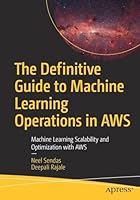
Advanced Forecasting with Python: With State-of-the-Art-Models Including LSTMs, Facebook’s Prophet, and Amazon’s DeepAR
- Length: 313 pages
- Edition: 1
- Language: English
- Publisher: Apress
- Publication Date: 2021-08-17
- ISBN-10: 1484271491
- ISBN-13: 9781484271490
- Sales Rank: #1257933 (See Top 100 Books)
Cover all the machine learning techniques relevant for forecasting problems, ranging from univariate and multivariate time series to supervised learning, to state-of-the-art deep forecasting models such as LSTMs, recurrent neural networks, Facebook’s open-source Prophet model, and Amazon’s DeepAR model.
Rather than focus on a specific set of models, this book presents an exhaustive overview of all the techniques relevant to practitioners of forecasting. It begins by explaining the different categories of models that are relevant for forecasting in a high-level language. Next, it covers univariate and multivariate time series models followed by advanced machine learning and deep learning models. It concludes with reflections on model selection such as benchmark scores vs. understandability of models vs. compute time, and automated retraining and updating of models.
Each of the models presented in this book is covered in depth, with an intuitive simple explanation of the model, a mathematical transcription of the idea, and Python code that applies the model to an example data set.
Reading this book will add a competitive edge to your current forecasting skillset. The book is also adapted to those who have recently started working on forecasting tasks and are looking for an exhaustive book that allows them to start with traditional models and gradually move into more and more advanced models.
What You Will Learn
- Carry out forecasting with Python
- Mathematically and intuitively understand traditional forecasting models and state-of-the-art machine learning techniques
- Gain the basics of forecasting and machine learning, including evaluation of models, cross-validation, and back testing
- Select the right model for the right use case
Who This Book Is For
The advanced nature of the later chapters makes the book relevant for applied experts working in the domain of forecasting, as the models covered have been published only recently. Experts working in the domain will want to update their skills as traditional models are regularly being outperformed by newer models.







